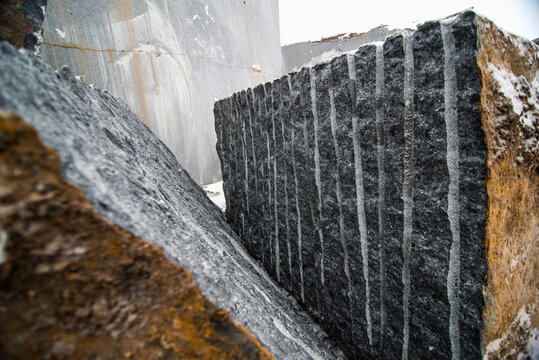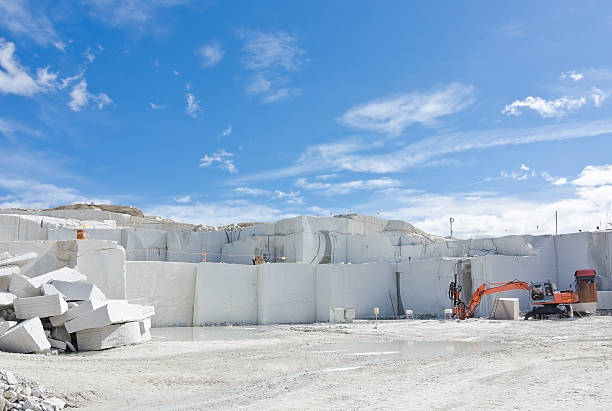Unearthing the Rich History and Lasting Practices of Granite Quarrying
As we stand on the precipice of discovering the intricate tapestry of granite quarrying, a trip with time reveals not just the physical act of removing rock yet additionally the cultural and historic importance woven into the extremely material of this technique. From the ancient origins that laid the foundation for contemporary quarrying techniques to the lasting practices that are shaping the future of this market, each carve mark on granite surfaces narrates waiting to be uncovered (granite quarries in south africa). The legacy of granite quarrying stretches far past mere extraction; it is a testament to human ingenuity, strength, and the enduring allure of this impressive rock
Old Origins of Granite Quarrying
Dating back to old worlds, the technique of quarrying granite has been an indispensable part of human background and building innovation. The earliest proof of granite quarrying dates back to ancient Egypt, where large pyramids and complex sculptures were crafted from this durable stone. The Egyptians used primitive tools to remove granite blocks from quarries, showcasing the significance of this material in their huge buildings.
Relocating ahead in history, the Greeks additionally made substantial contributions to the quarrying of granite. The Greeks used granite in different building marvels, such as temples and statues, demonstrating their ability in shaping and carving this durable rock. The Romans additionally fine-tuned the methods of quarrying granite, using advanced tools like knives and hammers to essence and form granite for their renowned frameworks.
Through the centuries, the method of quarrying granite has developed, with modern-day technologies enhancing efficiency while keeping the timeless appeal of this all-natural rock - granite quarries in south africa. From old civilizations to contemporary home builders, the tradition of granite quarrying remains to form our globe
Development of Quarrying Methods
The evolution of quarrying techniques has been marked by a continuous development in the direction of greater performance and precision in extracting granite. From the primary approaches used by our forefathers to the innovative modern technologies made use of in contemporary quarrying procedures, the industry has gone through considerable advancements. Early quarrying techniques entailed manual labor with basic tools such as blades, hammers, and wedges to remove granite blocks from the earth. As people advanced, techniques like fire-setting and primitive dynamites were introduced to promote the extraction procedure.
In even more recent times, the introduction of machinery reinvented the quarrying industry, making it possible for faster removal prices and raised efficiency. Technologies such as ruby cord saws, high-pressure water jets, and pneumatically-driven drills have come to be standard in modern quarries, permitting accurate cutting and decreased waste. Furthermore, advancements in computer-controlled tools and 3D modeling have actually optimized quarrying procedures, causing marginal ecological effect and boosted sustainability techniques. As the need for granite proceeds to increase, the advancement of quarrying techniques stays important to meeting industry requires efficiently and sustainably.
Cultural Importance of Granite
Granite holds an extensive cultural Get More Information relevance across numerous civilizations due to its enduring presence in architectural work of arts and revered monoliths. The cultural value of granite prolongs beyond its physical qualities; it embodies durability, stability, and eternity, making it a sign of sustaining legacies and practices.

Lasting Practices in Quarrying
In the middle of the rich background of granite quarrying and its social value exists an expanding focus on sustainable methods within the sector. As ecological awareness and concerns regarding resource exhaustion have actually heightened globally, the quarrying field has actually significantly embraced sustainable methods to reduce its influence on the atmosphere and my review here surrounding communities.

Furthermore, improvement and rehab of quarry websites post-extraction are essential to sustainable practices. By restoring quarried areas to an all-natural or helpful state, such as developing wildlife environments or leisure areas, quarriers can counter the environmental impact of their procedures and add positively to the neighborhood environment.
Tradition of Granite Quarrying
With a historical background soaked in craftsmanship and commercial development, what enduring effect has granite quarrying left on the landscape of modern culture? The legacy of granite quarrying transcends plain extraction techniques; it has formed architectural marvels, city landscapes, and cultural heritage worldwide. The durable nature of granite has made it a favored selection for monuments, structures, and infrastructure, standing as a testimony to the ability and artistry of quarry employees across generations.
Furthermore, the economic impact of granite quarrying can not be forgotten. The sector continues to provide job opportunity and drive neighborhood economic climates in regions where granite extraction prevails. It has also stimulated technical advancements in quarrying strategies and tools, leading to more reliable and lasting techniques.
In regards to sustainability, the tradition of granite quarrying consists of initiatives to mitigate environmental effects through improvement tasks and responsible resource administration. By balancing financial rate of interests with environmental stewardship, the industry makes every effort to guarantee that future generations can remain to gain from this long-lasting natural deposit.
Verdict
